Amsterdam’s Schiphol Airport is the third busiest airport in Europe and among the busiest in the world. According to an estimate, more than 63 million passengers pass through Schiphol and almost 479,000 flights land and take off to other international destinations. That makes an average of almost 1300 flights each day. This is the reason, Schiphol is very busy and hence, very loud.
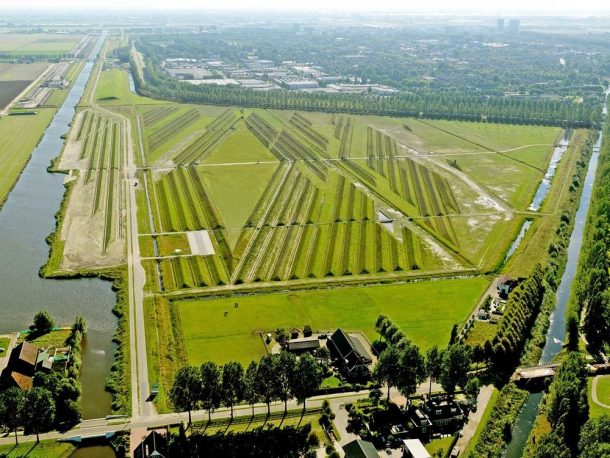
This site was chosen for a landing strip because it was a polder, a broad and flat lowland. The landing strip was built here in 1916 by the Dutch military. After decades, the Haarlemmermeer polder has also become one of the most densely populated areas of the country. The noise produced by the airport became a problem for the residents. The residents have complained about the noise for many years. This noise, the incessant rumbling din, is produced every time a plane takes off. It is called ground level noise and it propagates across the flat landscape of Haarlemmermeer that has no hills or valleys to kill the sound waves.
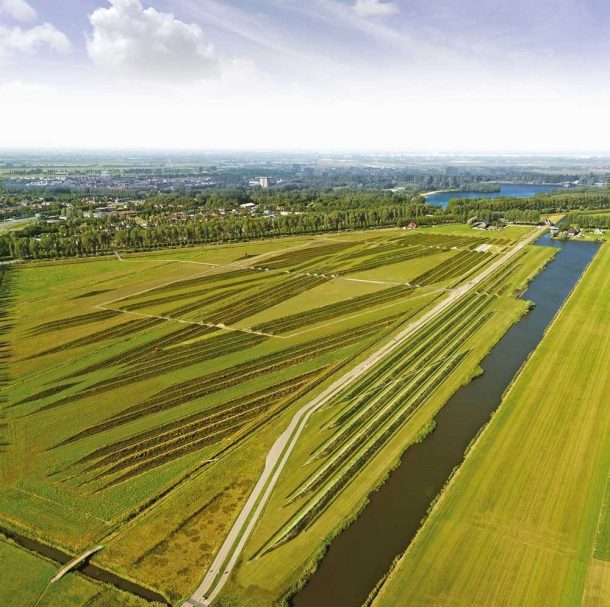
When the longest runway of the airport was opened in 2003, the residents were able to hear the din as far as 28km away. To deal with this problem, the airport decided to bring in an unlikely candidate, an architecture firm called H+N+S Landscape Architects and an artist Paul De Kort. The idea to bring in a landscape artist to solve the problem was born out of an accident. In a failed attempt to control the noise, the Schiphol Airport officials found out that the noise was dropping after the arable land between the runway and the surrounding settlements when they were ploughed. The artist, Paul De Kort, decided to dig a series of hedges and ditches on the southwestern side of the airport, which is very near to the runway. The distance between the ridges is almost 36 feet which is equivalent to the wavelength of the airport noise. There are 150 perfectly straight and symmetrical furrows with 6 foot high ridges between them. These ridges have proved effective and killed the noise levels by half.
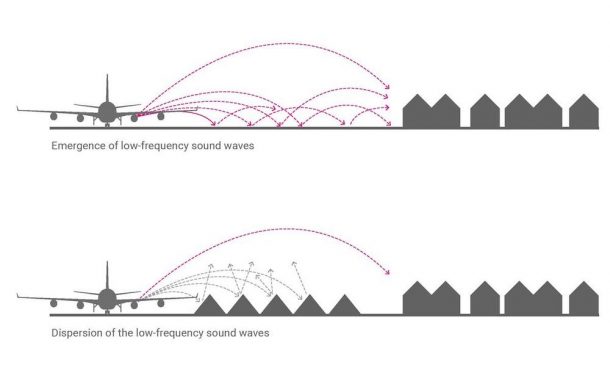
Paul De Kort used the experiences of an 18th-century German physicist and musician named Ernst Chladni. His research into the physics of sound gave the basics of modern acoustic science. He is also referred to as the ‘father of acoustics’. In an experiment, he sprinkled salt or sand across a metal plate and subjected it to vibrations. The vibrations caused the grains to move and arrange themselves into geometric patterns and ridges. These are known as the Chladni figures.
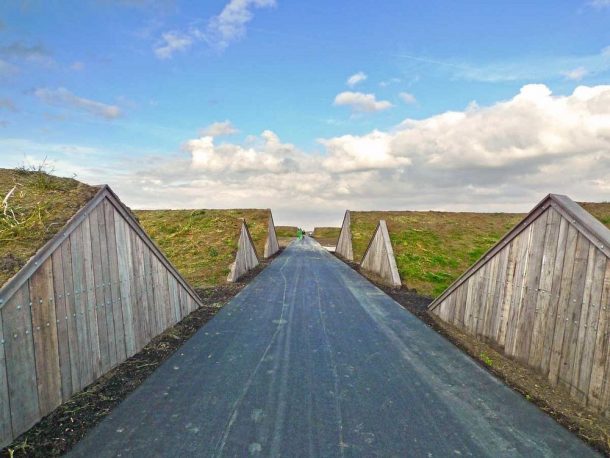
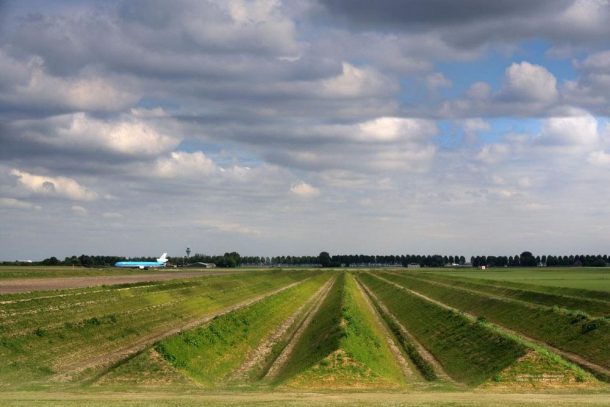
Paul De Kort’s work of landscape around the Amsterdam Airport Schiphol became a 36-hectare park called Buitenschot. There are many paths running through the park area. There is also a paved bicycle lane in the center and another paved footpath that crosses the park. This informal network is created by the grassy and cut paths between the ridges. The artist De Kort also created a number of art pieces within the park. For example the “Listening Ear” which is a parabolic dish that amplifies the sound coming from far away, and, “Chaldnipond” which is a diamond-shaped pond with a bridge and has a mechanism underneath which creates waves in the water.
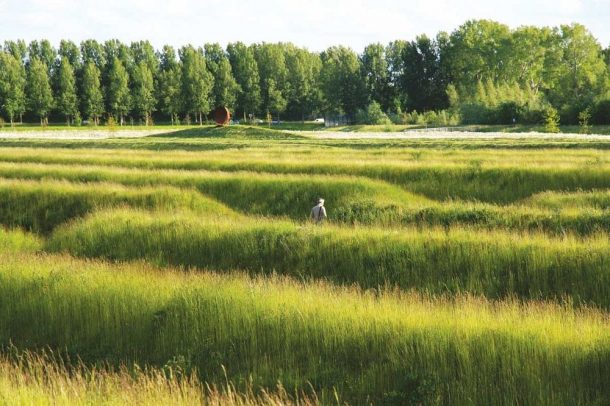
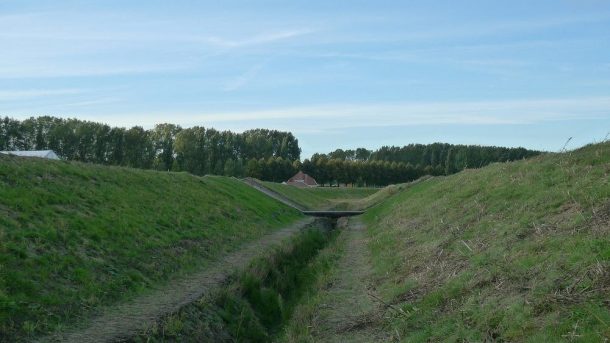
The airport is trying to reduce the noise further by changing the flight timings of certain planes. Their plan is to reduce the noise up to 10 decibels further to facilitate the residents of the area.


